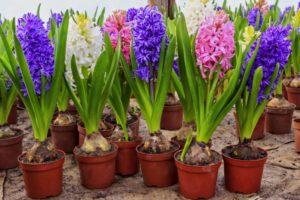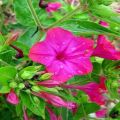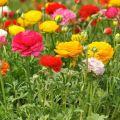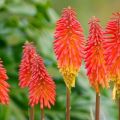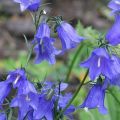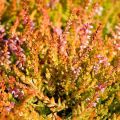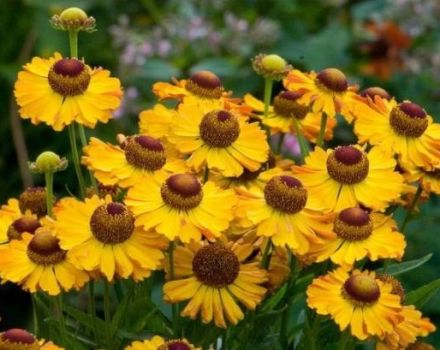Planting and caring for purslane in the open field, a description of the best varieties
Many gardeners plant purslane in their gardens. This is a beautiful ground cover flower that can decorate almost any flower bed. Before planting it, you will have to figure out tips for the care and planting of a purslane.
Description and features
Purslane is a decorative flower that is grown by most flower growers. The plant is undersized, since the height of its stem does not exceed thirty centimeters. The root system is considered to be fusiform and branched; it has many small roots. Flowers in the process of flowering are painted in yellowish, white and reddish colors.
You can grow a flower not only in flower beds, but also in baskets or small pots.
Choosing between an annual and a perennial flower
Some inexperienced growers consider purslane bushes an annual plant, but this is not the case. Today, many perennial hybrid varieties have been bred that can be grown both indoors and outdoors. Experts recommend planting perennial flowers, since they can be grown for a long time in one place.
Kinds
There are four varieties of plants that have different distinctive features.
Large-flowered
It is a decorative flower that is popular with florists from all over the world. The advantages of large-flowered varieties include:
- the size of the flowers, the diameter of which is 4-6 centimeters;
- long flowering;
- disease resistance.
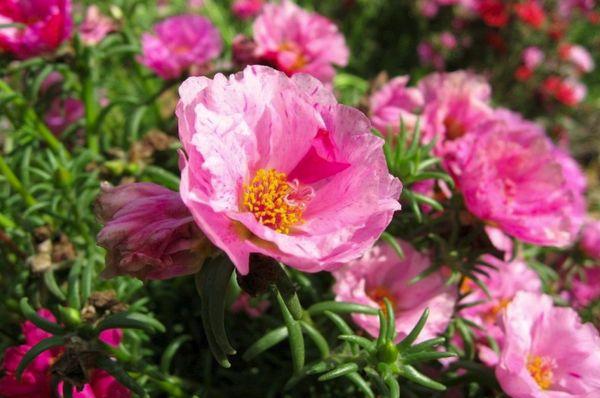
Ampelny
A perennial hybrid bush that is planted outdoors. Distinctive features of ampelous flowers are fleshy oval leaves and thick stems. Flowers bloom in summer, they are purple, orange and reddish in color.
Garden
Garden purslane, or garden purslane, is classified as low-growing flowers with a height of 25-35 centimeters. The bush spreads on the ground, its stems are covered with large green leaves. Over time, flowers appear on the plant, which turn yellow after flowering.
Flowering
When decorating a garden, a flowering species is often planted that blooms longer than other plant varieties. The stunted stems of the bush grow up to 25 centimeters. With proper care, it can grow up to forty centimeters.
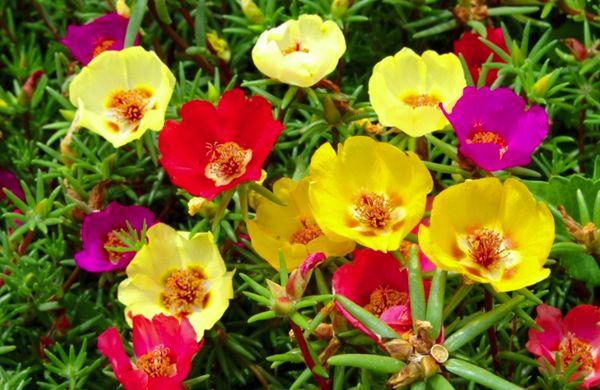
Popular varieties
There are nine varieties of purslane, which are planted by many growers.
Royal
People who want to plant large-flowered plants in their garden can plant the Royal Variety. In summer, large flowers with a diameter of more than five centimeters appear on the bushes. Their color can be different, it depends on the planted type of the Royal variety.
White-flowered
This variety differs from others in its snow-white inflorescences, which outwardly resemble marshmallows. The advantages of the white-flowered plant include the growth rate of bushes, resistance to droughts and common ailments.

Princely
People who do not want the planted flowers to close at night can plant the Prince's purslane. This is a large-flowered plant with inflorescences of various colors. Such bushes are undemanding to care for and are resistant to hot weather.
Airy marshmallow
An annual and undersized bush, whose main stem does not grow more than ten centimeters. Airy marshmallow spreads well on the surface of the earth. Its flowers are large and have a diameter of about seven centimeters. The compactness of the Airy Marshmallow allows you to grow it in baskets, pots and even cups.
Slendens
A compact bush that differs from other varieties in the bright color of the inflorescences. The blossoming petals are bright pink with a slight purple tint. Splendens is resistant to viral diseases and high temperatures.

Double Mix
A low flower bush for outdoor use. Resistant to heat and therefore grows well in summer. Needs regular feeding and watering for better flowering.
Sunglo
A large-flowered perennial plant whose flowers will not close at night and on cloudy days. Sunglo is characterized by unpretentious care, long flowering and immunity to most diseases.
Terry mix
The shrub has creeping shoots, the length of which is 20-25 centimeters. Terry mix flowers are small, only four centimeters in diameter. The advantages of the variety include the rate of emergence of seedlings, which begin to hatch ten days after planting.
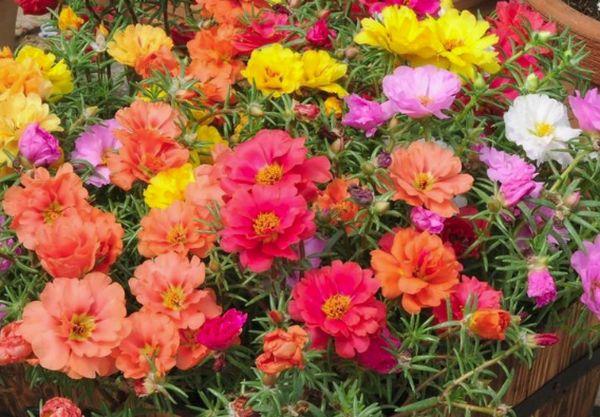
Scheherazade
A large-flowered variety of purslane that only blooms in sunny weather. At night and in cloudy weather, the flowers are completely closed. Scheherazade begins to bloom in the first half of July and ends in 2-3 weeks.
Growing
There are two methods of planting purslane that you need to familiarize yourself with.
Seedling method
Most flower growers use the seedling method of planting a flower.
Timing
First you need to figure out when they start sowing seed. Seeds are planted for further growing young seedlings in the twenties of March or in the first weeks of April.
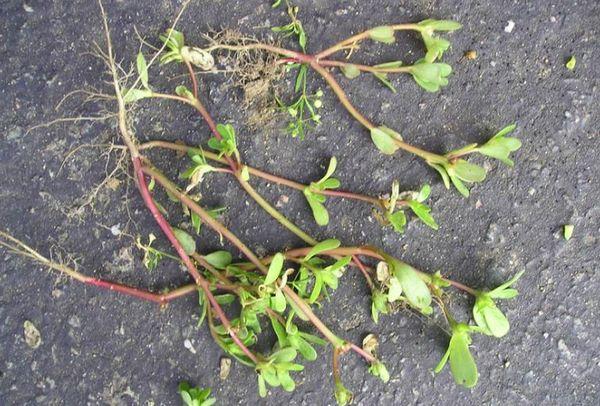
How to plant
Before sowing seeds, you need to prepare containers in which they will germinate. For growing purslane, small pots are chosen that can be covered with a lid. They are filled with soil mixture and holes are made for seeds.
Ground requirements
Before planting seeds, you need to prepare a soil mixture. For this, the soil from the garden is mixed with expanded clay and perlite. This is to create a small drainage layer. Also, the soil is mixed with wood ash and droppings for better growth of seedlings.
Temperature regime
It is necessary to grow seedlings at optimal temperature indicators. Experts advise growing it in warm rooms where the temperature does not drop below twenty degrees.
Airing
Some people think that when growing purslane you don't need to air it, but this is not the case. It is necessary to air the room where the seedlings grow regularly. Experts recommend doing this at least three times a week.
Thinning
When the seedlings grow up to 5-6 centimeters in height, you need to start thinning them. This procedure is carried out so that the plantings are not very thickened. When thinning, weak and small seedlings are cut off.
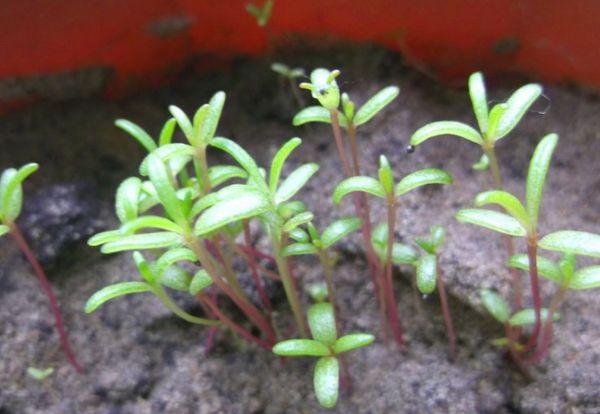
Picking
Experts advise picking people who have planted seeds in a large container at a distance of less than a centimeter from each other. When a third true leaf appears on young seedlings, they are transplanted into separate containers.
Hardening
Before planting seedlings in the garden, they are preliminary hardened. To do this, pots with flowers are taken outside for 2-3 hours daily. This should be done in the spring, when the temperature rises to 10-15 degrees.
Landing in open ground
Sprouted and hardened seedlings can be planted in open ground. Before doing this, holes are created on the site with a depth of 4-5 centimeters. They are preliminarily watered and fed with organic matter, so that the seedlings will quickly begin. After that, seedlings are planted in the dug holes and buried with earth.

Seedless sowing method
Some plant purslane in a reckless way.
Timing
It is necessary to plant flower seeds outside in the spring, when there is no frost and the air warms up to 15 degrees above zero.
Site selection
Having decided on the timing, they choose a place for sowing planting material. It is necessary to choose a well-lit area in the garden that is illuminated by the sun most of the day.
Soil preparation
In order for the planted seeds to germinate faster, it is necessary to prepare the site in advance for planting. The place where the bed will be located is fed with organic matter and mineral dressings. Also, a little sand is added to the ground to make it loose.

Landing scheme
Since the bushes are spread on the ground, it is contraindicated to plant them next to each other. Therefore, the distance between each hole is about 20-30 centimeters. This is enough so that neighboring bushes do not interfere with each other.
Thinning
If the plantings are thickened, they will have to be thinned out. When thinning, all weak seedlings are removed, which can quickly die.
Landing before winter
Only florists living in the southern regions can be engaged in planting flowers before winter. This is done at the end of September or the first half of October.
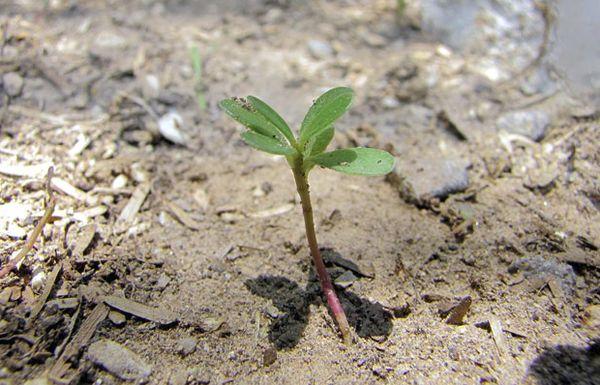
Reproduction
There are two ways to propagate purslane.
Seeds
The easiest way to propagate a flower is with seeds. They are collected from the inflorescences at the end of summer. The collected seeds are planted in the garden in spring for further germination.
By cuttings
To obtain cuttings that can be planted in spring, 2-3 branches are cut from the plant. Then they are placed in a jar of water for rooting. After the roots appear, the petioles are transplanted into a pot or garden.
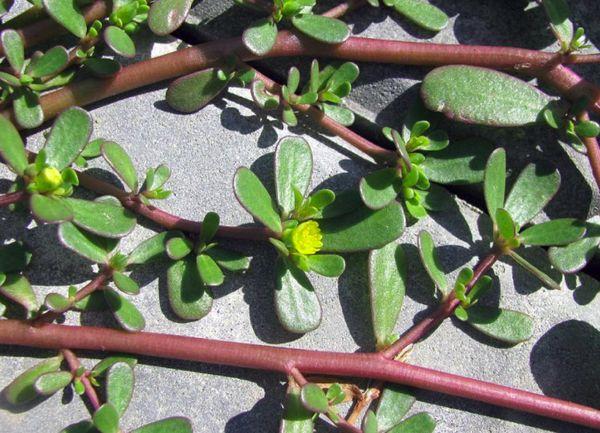
Care
People who have planted a purslane should know how to care for it.
Watering
Despite its resistance to droughts, the flower must be watered periodically with water. Soil moistening is carried out infrequently - 2-3 times a month. Too often moisten the soil is contraindicated.
Mulching
Some experienced gardeners advise mulching the soil when growing a flower. For this, the soil surface is covered with a thin layer of dried hay, straw or sawdust. Sometimes peat and fallen leaves are used.
Preparing for winter
Purslane winters poorly and does not cope with frosts, and therefore it must be prepared in advance for wintering. To do this, cut it off and cover it with a polyethylene cover.
Collection and storage of seeds
Seed pods ripen by the end of summer. Therefore, collecting seeds should be done in mid or late August. The collected seeds are placed in a plastic bag and stored until next spring.
Growing problems
The main problem that growers face when growing purslane is poor flowering. Most often, the plant does not bloom well due to the wrong growing place.Also, flowers may not bloom due to inappropriate soil.
How to grow at home
Some people want to grow purslane not outdoors, but at home. To do this, you will have to plant seeds in a spacious pot. At the same time, it is necessary to grow a flower on a windowsill, which is illuminated by the sun during the day.
Conclusion
Purslane is a plant used to decorate gardens and summer cottages. Before planting such a flower, you need to familiarize yourself with the main cultivation methods and understand the nuances of caring for a planted plant.
